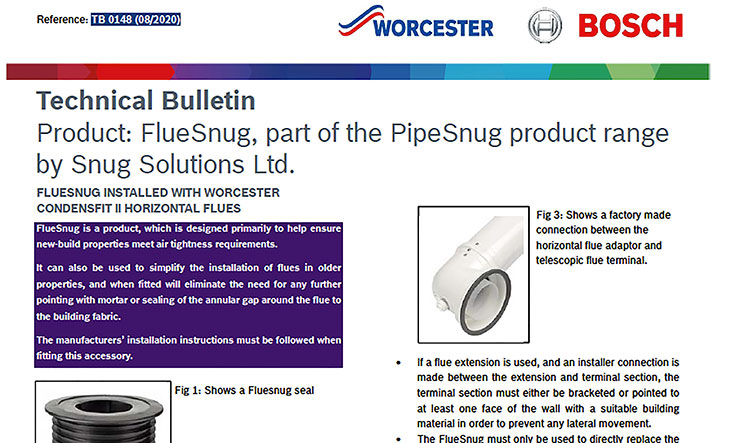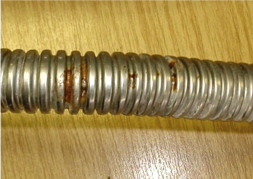
Technical Bulletin 111
The use of anaerobic compound as a bonding agent to join copper pipework to copper capillary fittings conveying gas. Issued 13 August 2018.
This Technical Bulletin provides guidance to Gas Safe registered businesses/engineers on the unsuitability of using anaerobic compounds to join copper pipework intended for the supply of gas.
Introduction
Gas Safe Register is aware of product manufacturers that are producing an anaerobic compound to bond copper pipe to copper fittings. The bonding agent is used instead of the traditional solder method. This TB is designed to increase awareness of these products and to provide guidance to registered businesses about their suitability for use on gas installations.
Normative Standards
Currently, BS 6891(1) allows copper pipework to be joined only by either a capillary soldered joint (this may be either a soft solder or brazed joint), or, alternatively, using a compression fitting – but only in readily accessible areas.
IGEM/UP/2(2) also only permits the use of capillary solder joints, whether soft solder or brazed, or suitable compression fittings.
Regulations
The GSIUR definition of an ‘appropriate standard’ recognises in addition to accepted normative documents (ie, British Standards) that goods and materials may come to market that are of an innovative nature. Within the same definition It states that technical specifications or a procedure of manufacture which, in use, provides equivalent levels of safety, suitability and fitness for purpose to that achieved by a normative standard, may also be considered an ‘appropriate standard’ (see L56 Glossary). Ultimately, whether or not a technical specification satisfies equivalence is a decision for a court of law.
Guidance
Before considering the use of this type of product, gas engineers need to decide whether or not the information and technical specifications provided by a product manufacturer are appropriate.
Manufacturers of anaerobic compounds may state that their product is suitable for jointing copper pipework for conveying gas and provide technical specification and guidance on its use. If you decide these products are suitable for this purpose, the manufacturer’s instructions must be adhered to, to ensure that a suitable joint is made.
Note 1: Anaerobic sealants/ adhesive is a bonding agent that does not cure in the presence of air.
Note 2: For details of current gas safety legislation, building legislation and industry standards for the geographical areas covered by Gas Safe Register, see the Legislative, Normative & Informative Document List (LNIDL)(3) by logging into your online account at: https://www.gassaferegister.co.uk/sign-in/
Note 3: For general information about the process behind the development of Gas Safe Register Technical Bulletins and the expectations for all stakeholders, see TB 1000(4) by logging into your online account at: https://www.gassaferegister.co.uk/sign-in/
Gas Safe Register’s Technical Team says:
Until products of this type and their specification, method/ suitability of use are included in conventional industry standards – ie, British Standards or IGEM standards – if this method of copper joint is used by a registered engineer, Gas Safe Register will record the circumstances within its inspection as follows:
“It has been identified that the copper gas supply pipework installed by your [registered gas engineer/unregistered fitter (delete as required)] has been made using a jointing method/ material which is currently not covered in the scope of relevant normative industry installation standards. A bonding agent has been used instead of traditional solder methods. This does not mean that the method or products used are unsafe, just that they are not covered by current industry installation standards – such as British Standards. However, as far as can be determined, the joints have been made in accordance with the product manufacturer’s installation guidance. Gas Safe Register will not be pursuing this matter with the installing business. Your installation has been tested against industry standards.”
Bibliography
(1) BS 6891: 2015 Specification for the installation and maintenance of low pressure gas pipework of up to 35mm (R1¼) on premises
(2) IGEM/UP/2 Edition 2 Gas Installation Pipework, Boosters and Compressors on Industrial and Commercial Premises
(3) LNIDL – Gas Safe Register Legislative, Normative & Informative Document List
(4) TB 1000 – An introduction to Gas Safe Register Technical Bulletins
Read Technical Bulletin 111 here: TechnicalBulletin111.pdf


